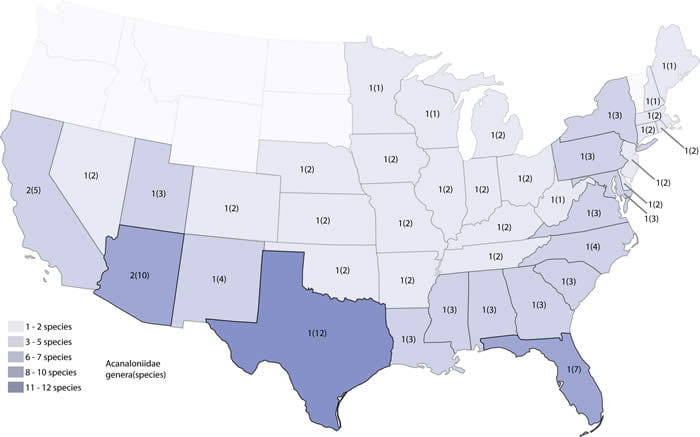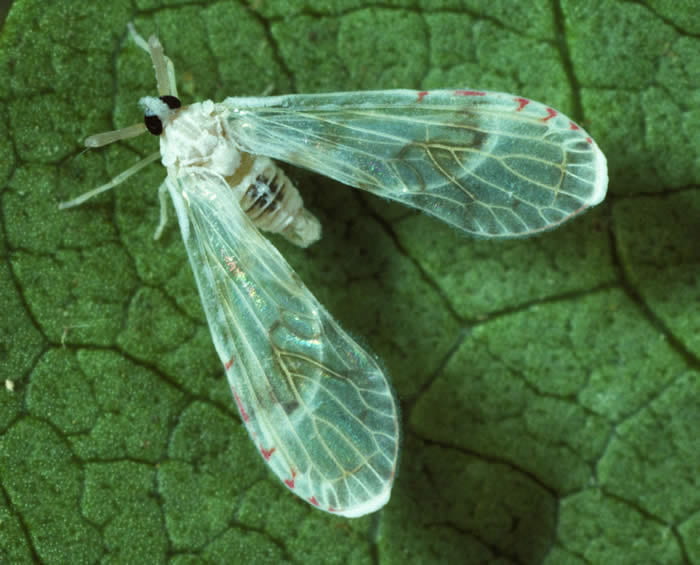Suggested citation
Bartlett, C. R. 2020 (and updates). Planthoppers of North America (accessed [date]). https://sites.udel.edu/planthoppers/
About Planthoppers of North America
Planthoppers of North America is about the Fulgoroidea (Hemiptera) north of Mexico (mostly), emphasizing taxonomy and nomenclature. The content of the site is largely based on Bartlett et al. (2014). The intent of the site is to provide an updated overview of the current taxonomy and nomenclature of planthoppers north of Mexico, including photos of representatives of all genera within the study area. This site is also will help track updates to that manuscript (especially distribution data and updated nomenclature). Perhaps sometime in the future, I’ll expand the scope to include Mexico or the Neotropics (but I need to start somewhere, and north of Mexico is manageable).
This site is currently in development. When completed, it will have dichotomous keys to genus for planthoppers north of Mexico, and a page for each genus providing a list of species in the genus, with summary distributions, host plants, recognition features (to genus), and select references. The list of species will include all species in the genus (although distribution data for Neotropical or Old World species may be incomplete). Additional photos and data – especially host and distribution data – will be added as time allows and as new (or omitted) information comes to my attention. I hope to obtain photos for as many species as I can within the purview of this site – although additional support will be needed to accomplish this.
This site has relatively recently been moved to a new server (“CANR” instead of “AG”), but not all pages have been moved (delphacids are mostly on the old server, as well as the bibliography); all pages will be updated in time.
At the time of publication, there were 12 families, 167 genera and 914 species of planthoppers north of Mexico; be we have added several since then, including the adventive spotted planthopper, the flatid Petrusa, the delphacids Paradelphacodes paludosus, Tarophagus colocasae, and Opiconsiva tangira, and some others…
With the US divided into regions (arbitrarily) as follows:

Planthopper diversity is as follows (according to currently available data)
| Number of planthopper genera and species among regions of the contiguous United States. | |||||||||||
| Northwest | Southwest | Central and Northcentral | Southeast | Northeast | |||||||
| Family | Genera | Species | Genera | Species | Genera | Species | Genera | Species | Genera | Species | |
| Acanaloniidae | 0 | 0 | 2 | 18 | 1 | 2 | 1 | 7 | 1 | 3 | |
| Achilidae | 2 | 8 | 8 | 48 | 5 | 18 | 4 | 19 | 3 | 19 | |
| Caliscelidae | 2 | 9 | 6 | 43 | 3 | 16 | 3 | 20 | 3 | 10 | |
| Cixiidae | 5 | 19 | 13 | 144 | 7 | 38 | 9 | 51 | 7 | 39 | |
| Delphacidae | 26 | 64 | 46 | 152 | 38 | 117 | 49 | 190 | 38 | 128 | |
| Derbidae | 2 | 2 | 11 | 36 | 10 | 36 | 13 | 55 | 10 | 40 | |
| Dictyopharidae | 3 | 20 | 14 | 80 | 5 | 17 | 5 | 14 | 4 | 10 | |
| Flatidae | 0 | 0 | 13 | 19 | 4 | 4 | 9 | 12 | 4 | 4 | |
| Fulgoridae | 2 | 2 | 8 | 17 | 2 | 2 | 4 | 7 | 3 | 3 | |
| Issidae | 1 | 2 | 11 | 22 | 1 | 3 | 2 | 6 | 1 | 3 | |
| Kinnaridae | 0 | 0 | 1 | 5 | 0 | 0 | 0 | 0 | 0 | 0 | |
| Tropiduchidae (Gaetuliini) | 2 | 2 | 10 | 62 | 0 | 0 | 0 | 0 | 0 | 0 | |
| Tropiduchidae (Tangiini & Remosini) | 0 | 0 | 0 | 0 | 0 | 0 | 2 | 2 | 0 | 0 | |
| 45 | 128 | 143 | 646 | 76 | 253 | 101 | 383 | 74 | 259 | ||
| Source: Bartlett et al. 2014. | |||||||||||
The distribution of planthopper richness over the US is as follows

Planthopper richness in the US (source Bartlett et al. in review)
References
Bartlett, C. R., L. B. O’Brien, and S. W. Wilson. 2014. A review of the planthoppers (Hemiptera: Fulgoroidea) of the United States. Memoirs of the American Entomological Society 50: 1-287.


